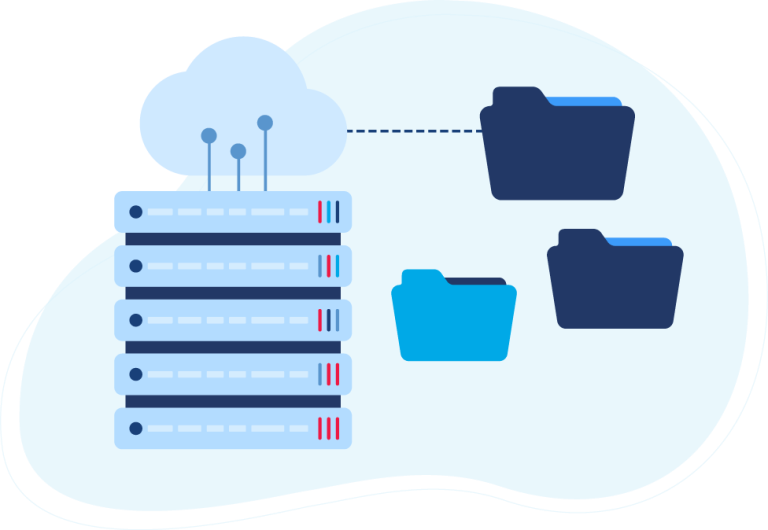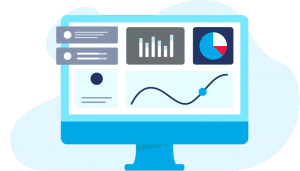eCommerce acronyms and technical terms are part of the changing commerce world. Just keeping up with industry jargon can be a full-time job! And we at VL OMNI would know. We’ve created this list of common commerce terms as a guide to understanding some key terms for eCommerce alongside clear and concise definitions.
We’re in the thick of cutting-edge commerce developments every second of every day and on the lookout for the next trend that might impact Merchants to incorporate into our serverless platform. Thus, VL OMNI is always on the side of sharing what we learn and help Merchants.
This quick reference sheet will help you learn about all things integration and commerce. On that note, this handy tool will be continuously updated to ensure we stay up to date with new and up-and-coming commerce abbreviations and terms.
Don’t miss an update: Click the star and bookmark this page!
Commerce Terms All Merchants Should Know
iPaaS
iPaaS means integration platform as a service and refers to a single platform that connects various applications, systems, and technologies, and can be thought of as a subset of ‘SaaS’.
SaaS-based integration platforms like VL OMNI are iPaaS. Put simply, iPaaS services allow businesses to maintain organization-wide data that’s holistically shared across all applications and communication points.
Some important features:
- iPaaS allows for accessibility because of its cloud-based nature, allowing businesses using iPaaS to check their operations from anywhere on any type of device.
- These solutions promote speed as data upload and transfer can be made in real-time between integrated applications.
- Another great benefit is the flexibility and agility that iPaaS offers. With iPaaS, businesses can expand and grow in an elastic and scalable environment.
EU-GDPR
Also known as the European Union General Data Protection Regulation, EU-GDPR are new standards of online privacy in relation to personal data and consent.
The EU-GDPR regulates all businesses that use or touch any data that can be traced back to an individual from the EU, regardless of whether or not the EU citizen is physically in the EU. Businesses that handle such data are subject to strict laws on gathering information legally and protecting it from hacking.
Fun fact: VL OMNI has been fully EU-GDPR Compliant since well before it came into full effect!

WMS
A Warehouse Management System is a software application designed to support and optimize warehouse functionality. A WMS plays an integral role in supply chains running smoothly; WMS applications typically track inventory movement, locations, and status between warehouses.
With the right WMS integrated into a broader technology ecosystem, merchants are able to keep better track of their inventory. Therefore, helping Merchants ensure on-time deliveries, prevent delays, and monitor customer concerns—all in real-time.
ERP
This stands for Enterprise Resource Planning and is at its essence it is a tool for managing information. It is specially important for growing SMB and Enterprise Merchants. Information management is the organized collection, storage and use of information for the benefit of the organization.
An ERP centralizes all main business processes such as CRM (see below), finance, ordering, invoicing, and more.
By centralizing these key business functions in a single application, Merchants can streamline the flow of information. Coupling an ERP with strategic data integration only further empowers your business. Linking together your business processes and applications strategically is the next step to fulfill promises faster and more accurately.
CRM
Customer Relationship Management applications are tools that allow companies to manage all interactions with current and potential customers. CRMs typically house customer details and order history, including the entire history of a customer’s interaction with the company for the purpose of improving business relations with customers.
A CRM is beneficial to not only businesses but to end customers of that business by:
- Allowing companies to improve sales growth and understand customer interactions through marketing, customer service, sales, and support.
- Improving the customer experience via accessible customer data records and business intelligence via analytics.

OMS
The Order Management System is a computer software system used for order entry and processing and provides efficiencies by providing timely invoices and payments. A fully integrated OMS can also prevent manual errors.
EDI
Electronic Data Interchange is the grandfather of modern data communication methods (APIs) and is a standard format in which businesses electronically communicate information such as purchase orders or invoices with bricks and mortar sales channels including third-party retailers.
There are challenges that come along with EDI, many of which can be resolved via the right EDI provider (like VL OMNI!).
If your business does EDI and is experiencing the following issues, it might be time to look into a different EDI solution or provider:
- There are errors and missing fields associated with your EDI strategy; as volumes increase, it will be more difficult to manually catch and fix errors, resulting in chargebacks and other penalties.
- Transactions must happen in a timely manner and with transparency; the velocity of receiving and sending information is crucial for maintaining this transparency.
- Communications through EDI do not always occur in real-time. It can affect transparency and communication with partners if not planned for accordingly
PIM
Product Information Management is a crucial piece of technology for merchants and retailers; it manages master product information. Product information is clearly crucial for marketing and selling products through different distribution channels, but without the right mechanisms in place to push the right product information to the right sales channel, you’re not getting your money’s worth from your PIM software.
For maximum impact in delivering product information automatically to all sales channels in the correct configurations, pair your PIM with the right data integrator.
API
An Application Program Interface is a set of routines, protocols, and tools for building software applications. An application’s API(s) specifies how software components should interact and are of critical importance to all data integration efforts. It is impossible to integrate an application that does not have an API, and not all APIs are created equal!
Bottomline: when you start talking APIs, you’re in the deep technical territory. If you’re not certain, reach out to an expert like VL OMNI; we’re always happy to share the benefits our 25+ years in moving data with Merchants and Partners alike!
But before we move on from APIs altogether, there’s one more important distinction you should know about: there are two kinds of APIs that exist in the world today, and one is definitely better than the other…
REST
REST stands for REpresentational State Transfer. It is simply a different style of application interface when compared with its predecessor, SOAP. It enables data integrators like VL OMNI to receive data from different sources and alter it.
With REST, it’s easier to manipulate data to conduct several different operations without much effort. Overall, REST is way easier to use and far more efficient, allowing you to rest while you are using this application interface (pun intended).
SOAP
SOAP, meanwhile, stands for Simple Object Access Protocol. No, this is not the soap used to clean with, but rather a messaging protocol that outlines the specifications for exchanging information within computer networks.
The purpose of SOAP is to deliver extensibility, neutrality, and independence. SOAP is the predecessor to the more agile and flexible REST API structure. Learn more about SOAP here.
Commerce Is Changing
Although this list is only 11 out of probably hundreds of acronyms for commerce, this list is a great place to start to better understand commerce and the intersection of commerce technology and data integration.
And as we started this blog out saying, this list is not—and purposely will never be—complete! Commerce and the language we use to describe it is undergoing constant renovation, disruption, and expansion. New terms come out every week, if not almost daily. Check out our complete integration toolkit to learn more about the commerce landscape.
I hope that you find this list helpful as I did, and if there are other terms that could be added, give us a shout on LinkedIn! So bookmark this page, subscribe to our newsletter, and follow us as we continue to write more on the journey to becoming a data integration expert!
 D365 Business Central
D365 Business Central Netsuite
Netsuite


